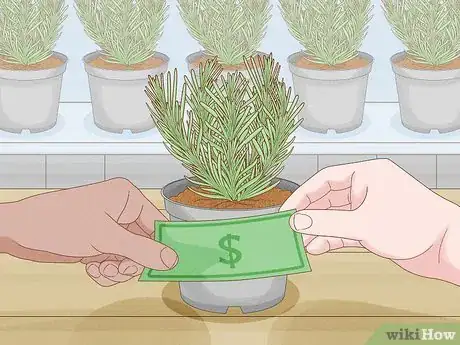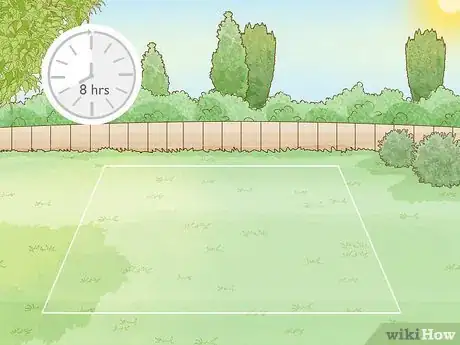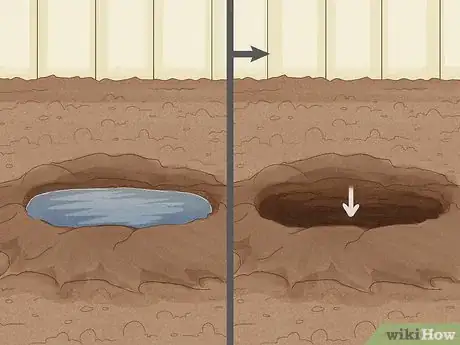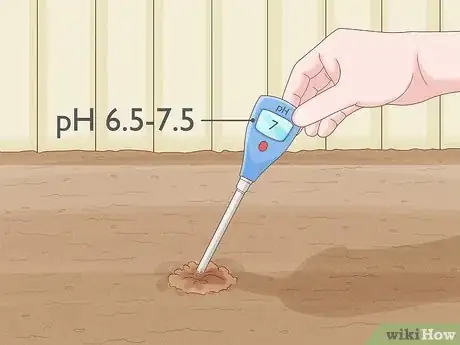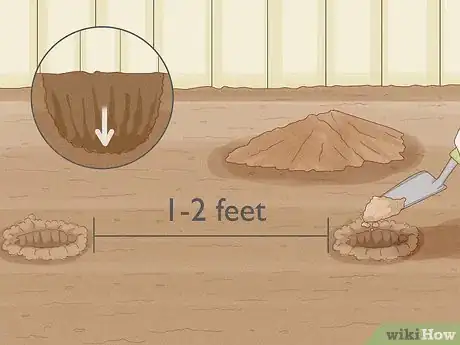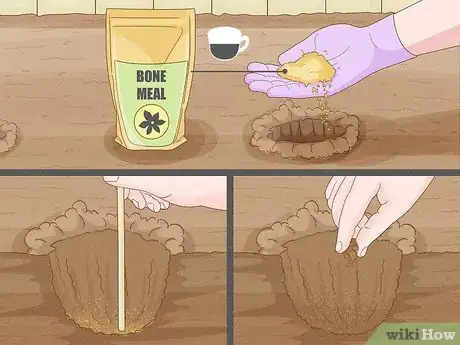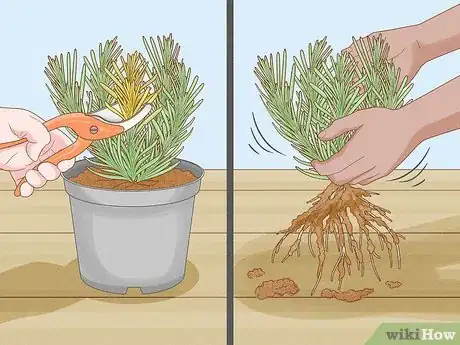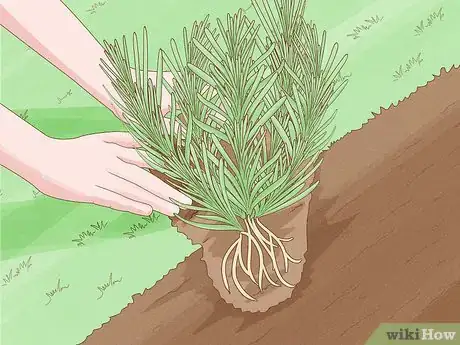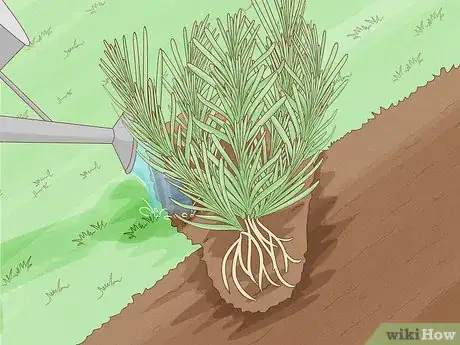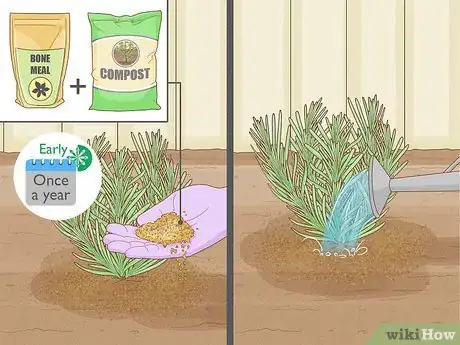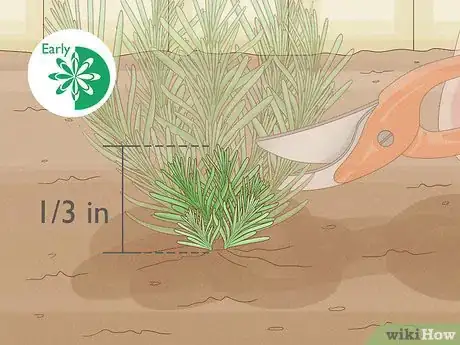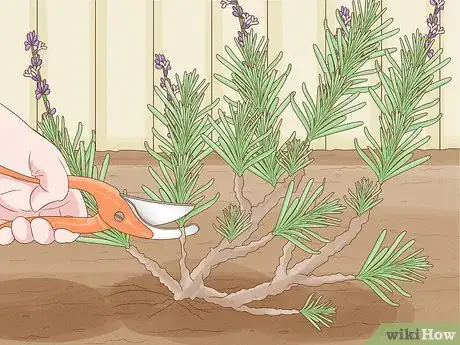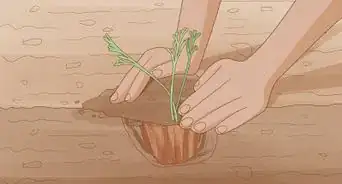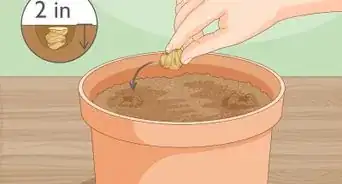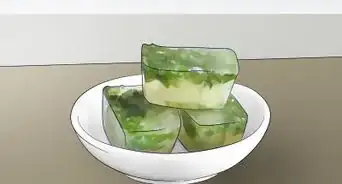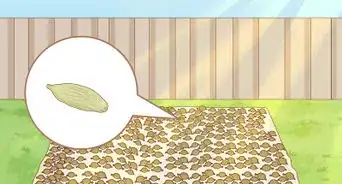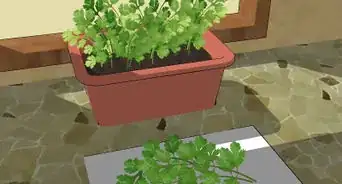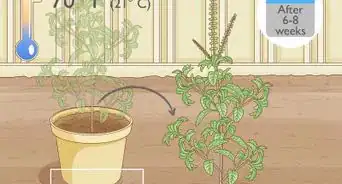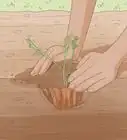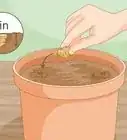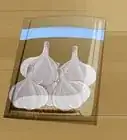This article was co-authored by Lauren Kurtz. Lauren Kurtz is a Naturalist and Horticultural Specialist. Lauren has worked for Aurora, Colorado managing the Water-Wise Garden at Aurora Municipal Center for the Water Conservation Department. She earned a BA in Environmental and Sustainability Studies from Western Michigan University in 2014.
wikiHow marks an article as reader-approved once it receives enough positive feedback. In this case, 100% of readers who voted found the article helpful, earning it our reader-approved status.
This article has been viewed 84,695 times.
Lavender is a Mediterranean herb that is easy to grow as long as you provide it with full sun and good drainage. If your soil isn't quite sandy enough, you can grow lavender in pots instead of a planting bed. The fragrant purple flowers enhance the beauty of any garden, and harvested lavender may be used in crafts, perfumes and baked goods.
Steps
Preparing to Plant Lavender
-
1Pick out a lavender plant. It's a good idea to pick out a plant sold by a local nursery, since it will provide varieties that do well in your climate. There are many different species of lavender that each have slightly different needs, so if you order a plant online you might not end up with one that will do well in your region.
- If your local nursery doesn't sell lavender, do a little online research to find out which varieties work well in your area. The most important factor will be the climate. If it gets cold or very wet where you live, you'll want a hardier species like Mustead or Hidcote. If you live in a place with very mild winters and hot, dry summers, you'll have more options available to you.
-
2Choose a sunny spot in your yard. Lavender is native to Mediterranean countries. To help it thrive in your yard, you'll need to recreate a similar hot, dry, seaside environment. Choose the sunniest spot in your yard for lavender, as it needs at least eight hours of sun every day to grow healthy.
- Look for a spot that's sheltered, but not shaded. Lavender can blow over in high winds, so it's a good idea to plant it near a wall or other large plants that don't loom too high, but are large enough to block the wind.
Advertisement -
3Check the soil for drainage. Lavender won't grow well in damp, soggy soil. It needs dry, sandy soil that drains very quickly so the roots won't rot. Check the soil's drainage by digging a hole and filling it with water. If the water drains quickly, the soil should be fine. If it stands in the hole and drains slowly, you'll need to amend the soil or find another spot.
- You can improve soil drainage by tilling the soil to a depth of about six inches and mixing in some builder's sand. This helps mimic the beachy natural conditions in which lavender plants thrive.
- You could also choose to grow lavender in a pot or a raised bed, which allows you to control the soil's properties more carefully and tailor them to the lavender's needs.
-
4Test the pH level of the soil. Purchase a pH soil tester from a garden center or nursery to check wither the soil is alkaline enough for lavender. The ideal pH level for lavender is between 6.5 and 7.5. You may need to add lime to the soil to increase its alkalinity.[1]
- A little lime goes a long way. Add just 2 or 3 ounces per cubic foot of soil.
- If you're using potting soil, check the label and buy soil with the correct pH.
Planting the Lavender
-
1Dig a hole large enough for the roots. Lavender appreciates slightly closed quarters, so dig a hole just large enough to contain the roots, and no larger. If you're planting lavender in a pot, you want to use a pot that's not much larger than the lavender's root ball. If you're planting more than one plant, leave one to two feet between each hole, since the plants will grow quite large.
-
2Place fertilizer in the hole. Sprinkle about half a cup of composted manure or bone meal into the hole to fertilize the lavender. This will help it get off to a good start. Mix it in with the soil at the bottom of the hole, then cover with a light layer of soil.
- If drainage is a concern, you can also mix in a handful of pebbles so the water drains through more easily.
-
3Prepare the lavender plant. Prune off any dead or decaying parts of the plant so that it gets good air circulation and the plant's energy will be directed toward new healthy growth. Shake excess soil from the roots and remove any that are torn or damaged.
-
4Place it in the hole. Place the lavender in the hole so that the roots are nestled against the bottom and sides. They should not be directly touching the composted material; rather, make sure there's a layer of soil over the compost before you place the lavender in the hole. Fill in the hole with soil and pat it around the roots.
Caring for Lavender
-
1Water lavender deeply but infrequently. Wait until the soil is dry before you water lavender. When you do water, water for several minutes to make sure the roots get completely soaked. If you live in an area where it rains frequently during the summer, skip waterings when the ground is wet.[2]
-
2Fertilize lavender in early spring. Lavender doesn't need to be fertilized more than once a year. In early spring, work some bone meal mixed with compost into the surface of the soil around the lavender, then give it a deep watering.[3] Over fertilizing lavender will cause the plant to grow poorly, rather than having the effect you want.
-
3Prune lavender. All year round, check the plant for dead or dying shoots and remove them promptly with a pair of sanitized pruning shears. Prune the entire plant back by 1/3 in early spring, before the new growth emerges, to tidy the shape of the plant.
- Pruning encourages healthy new growth to emerge. The lavender shrub will get bigger and thicker as it ages, producing more flowers every season. The first season may not yield more than a bunch or two. By year three, you should have several bunches per season.
-
4Harvest the flowers. When the lavender flowers just begin to open, usually in early summer, gather the lavender into a bunch (one bunch is about a handful of stems) and cut the stems. The plant will produce another flush of flowers before the end of the growing season.
- When you harvest flowers, avoid cutting into the woody part from which the shoots emerge. Cutting this part will damage the plant.
- Lavender stems may be kept in a vase filled with fresh water.
- To dry lavender, cut stalks before the flowers open, as soon as the buds turn purple. Tie a bunch using a rubber band and hang it upside down in a dark, dry place for about a week.
- The lavender flowers may be used in baking and savory recipes, for crafts, or to make essential oil.
Expert Q&A
Did you know you can get expert answers for this article?
Unlock expert answers by supporting wikiHow
-
QuestionIs a lavender plant a perennial?
 Maggie MoranMaggie Moran is a Professional Gardener in Pennsylvania.
Maggie MoranMaggie Moran is a Professional Gardener in Pennsylvania.
Home & Garden Specialist
-
QuestionHow far apart do you plant lavender plants?
 Maggie MoranMaggie Moran is a Professional Gardener in Pennsylvania.
Maggie MoranMaggie Moran is a Professional Gardener in Pennsylvania.
Home & Garden Specialist
-
QuestionWhere is it best to plant lavender?
 Maggie MoranMaggie Moran is a Professional Gardener in Pennsylvania.
Maggie MoranMaggie Moran is a Professional Gardener in Pennsylvania.
Home & Garden Specialist
References
About This Article
To plant lavender, start by picking a sunny spot in your yard with well-draining soil. When you’re ready to plant, dig a hole large enough for the roots, and leave 1 to 2 feet between each hole if you’re planting more than 1 plant. Next, sprinkle composted manure or bone meal fertilizer in the hole and mix it with the soil. Then, prune any dead or decaying parts off the plant, place it in the hole, and fill it with soil. Finally, water your lavender deeply. To learn how to harvest your lavender, keep reading!
